Dracaena Marginata Plant Care: How to Grow Madagascar Dragon Tree

The dragon tree (Dracaena marginata) is a popular houseplant that is easy to grow in most indoor environments. Looking like a small palm tree, the dragon plant has a narrow stem with tufts of thin, arching, sword-shaped leaves. The leaves give the Dracaena marginata plant a distinct spiky appearance that makes the plant an eye-catching indoor specimen tree. The Madagascar dragon tree is an excellent potted plant for homes or offices.
Dracaena Marginata Plant Care – Overview
To grow Dracaena marginata, place the plant in bright, indirect light, and grow it in well-draining potting soil. Water the Dracaena marginata plant whenever the soil has partly dried. The dragon plant needs occasional fertilizing, medium humidity, and growing temperatures between 70°F and 80°F (21°C – 26°C).
About Dracaena Marginata Plant (Red Edged Dracaena)
Commonly known as red-edged dracaena or Madagascar dragon tree, Dracaena marginata is one of over 120 species of the plants in the genus Dracaena.
In its native habitat of Madagascar, the dragon trees can grow up to 15 ft. (4.5 m) high. When grown indoors in pots, the slow-growing elegant dragon trees reach a height of about 3 ft. (0.9 m). Dragon trees are popular indoor plants because they tolerate low-light, infrequent watering, and some neglect.
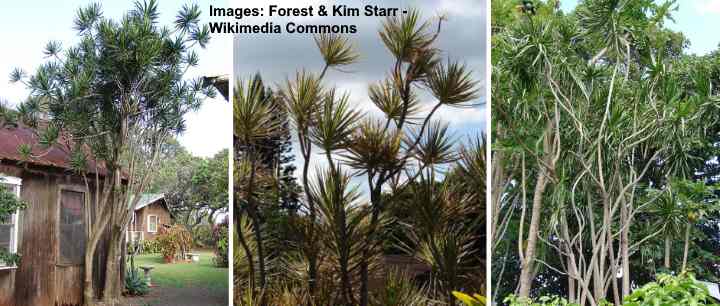
The dragon tree is a native plant of Madagascar
The dragon plant leaves grow upward and arch over, creating a spiky crown. Leaves grow to between 12” to 35” (30 – 90 cm) long and between 0.8” to 2.7” (2 – 7 cm) wide.
Red Edged Dracaena
The attractive feature of these “dragon palms” is their variegated leaves with red edges. The long, glossy, tapered leaves are green with red edges, hence the common name red edged dracaena.
There are several Dracaena marginata cultivars with different colored leaves, for example: Dracaena marginata ‘tricolor’ has creamy-yellow bands in addition to the red edges, and Dracaena marginata ‘colorama’ has more prominent red bands which give the plant a more pink-reddish appearance.
In this article, you will find out how to care for Madagascar dragon trees.
How to Care for Dragon Tree Plant (Dracaena marginata)
Despite being one of the easiest houseplants to care for, the dragon plant still has some basic growing requirements.
Here is how to care for a Dragon Tree Plant (Dracaena marginata).
Dragon Plant Light Needs
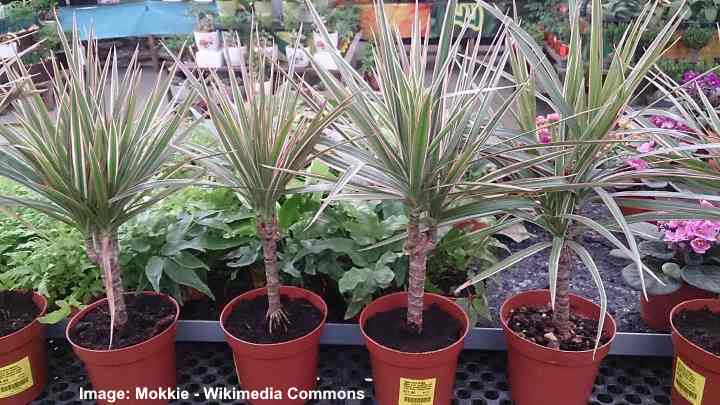
The dragon tree grows well indoors in indirect sunlight
Madagascar dragon trees (Dracaena marginata) thrive in bright light but shielded from direct sunlight. Adequate, indirect sunlight helps the indoor tree to grow quicker. The right amount of light also helps the glossy green and red leaves to stay shiny and healthy. Direct sunlight will cause sunburn on the leaves.
Although the dragon plant thrives in bright light, it is also a type of plant that can survive without much sun. So, you can put the Dracaena marginata plant pot in a shaded area or in a room that doesn’t get much natural light. Because these plants prefer humid locations, they are great plants for your bathroom.
One thing to remember is that low-light conditions will slow its growth. You may find that in a dark room or office, the plant doesn’t seem to grow much, and the leaves may be smaller. Of course, if you have the dragon tree on a desk or shelf, this slow growth rate can be ideal for indoor plants.
Water Requirements for Dragon Tree Plant

Thoroughly water your dragon tree houseplant as often as the top soil dries out. Water the plant until the water drains out of the pot.
Only water a dragon plant (Dracaena marginata) when the soil has partially dried out. Poke your finger about 1” to 2” (2.5 – 5 cm) into the soil to check for moisture. If the potting mix is dry, you know it’s time to water the plant. In the summertime, you may have to water it every 7 to 10 days.
Avoid watering the Dracaena marginata plant too often. Excessive, frequent watering causes root rot and several bacterial or fungal issues. If the soil is constantly waterlogged, your beautiful dragon plant may start to wilt, drop leaves, and eventually die. To revive a dying Madagascar dragon tree that has soggy soil, you may have to water it less and may need to repot it.
The best way to water houseplants—including dragon plants—is to thoroughly drench the soil and allow the water to drain out. This type of deep watering makes sure the roots get properly nourished and hydrated. The next time you should water the plant is when around 2” (5 cm) of the top soil is completely dry.
One of the watering mistakes to avoid is frequent, shallow watering. Watering little and often doesn’t allow moisture to get to the roots. Instead, you cause excess dampness in the top part of the soil around the stems. This creates an environment where white mold develops, and fungus gnats can thrive.
As a general rule, only water a dragon tree as often as the top part of the soil dries out. Dragon plants are quite drought-tolerant and can occasionally go a couple of weeks without water.
Best Soil for Dragon Tree
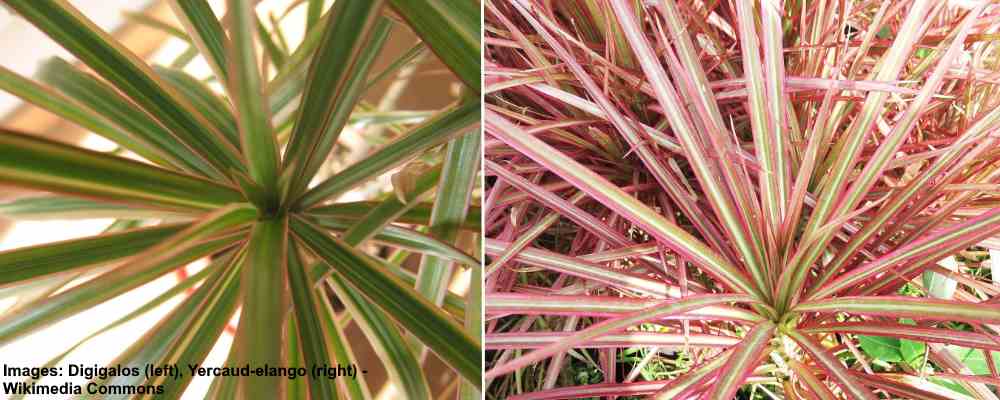
Various cultivars of Dracaena marginata have different colored leaves
Dracaena marginata plants need to grow in a light potting mix with excellent drainage. The perfect potting medium for the dragon plant should be a mixture of loamy soil and peat moss. You can add perlite to increase the soil drainage. To make sure the soil drains properly, grow the indoor tree in a container with drainage holes.
You can create a suitable potting mix for Dracaena marginata plants. Combine one-part bark chips, one-part peat, and one-part perlite. This combination of ingredients is ideal for dragon trees because the organic matter holds some moisture, and the bark chips provide nutrients and drainage.
There are a few ways to tell if your potting medium is suitable for dragon plants. First, the water should easily drain when watering. Second, it should hold enough moisture so that you water the plant every week or so in the summer. Third, water shouldn’t pool on the top of the soil.
The Right Indoor Temperature for Madagascar Dragon Tree Plant
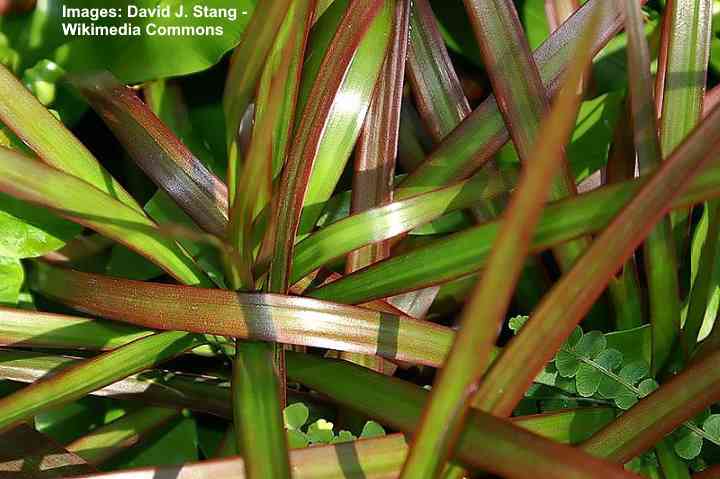
To care properly for your Dracaena marginata plant, grow it in average room temperature
Dragon trees thrive in average room temperatures. Growing in even indoor temperatures between 70°F and 80°F (21°C – 26°C) should help ensure healthy growth. Keep the dragon plants away from direct sunlight, hot radiators, or cold drafts.
Because dragon plants are easy to care for, they also survive in lower temperatures. They still grow well in cooler rooms that are between 65°F and 70°F (18°C – 21°C). However, the plant could start dying if temperatures regularly drop below 50°F (10°C). Generally, if you feel comfortable at home, your dragon tree will also grow well.
During summer and winter, it’s essential to keep your delightful indoor trees away from temperature extremes. In summer, keep the plant pot away from drafts or the cold air from an air-conditioning unit. In winter, don’t put the dragon plant next to a hot radiator. You will also need to remember to adjust your watering schedule during these seasons—water more often in summer and less frequently in winter.
Humidity Levels for Growing Dragon Tree Plant Indoors

Dragon tree plants prefer medium humidity when grown as houseplants
Madagascar dragon trees aren’t fussy when it comes to indoor humidity. Generally, average household humidity is fine for dragon plants to thrive. If your house has especially dry air, you could mist the leaves of the tree weekly to boost air moisture. Or, you could place the Dracaena marginata houseplant pot on a humidifying pebble tray.
One way to care well for your dragon tree plant is to clean the leaves with a damp cloth. Wiping the leaves down helps moisturize them and also cleans dust from them. This helps to not only keep the sword-shaped leaves lush and glossy but helps with photosynthesis.
How to Fertilize Madagascar Dragon Plant
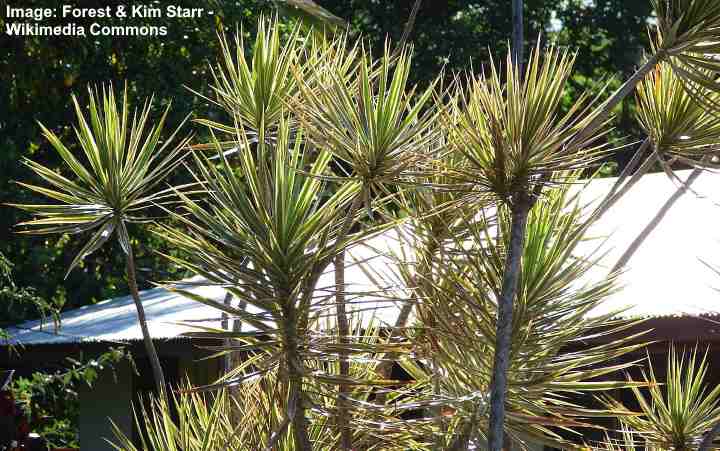
Fertilize your Dracaena marginata plant once a month during spring and summer
Dracaena marginata plants have a slow growth rate and don’t need much fertilizer. You can use a regular, balanced houseplant fertilizer diluted to half-strength. Feed the dragon plant once a month during the growing season—from spring, through summer, until early fall. Don’t fertilize in late fall or winter.
When caring for a thriving dragon tree plant at home, don’t over-fertilize it. Similar to overwatering, too much fertilizer can cause your plant to wilt and die eventually.
To help your plant thrive, you can flush the soil once or twice during the growing season. This practice is useful for indoor plants where minerals don’t rinse from the soil easily like they do when growing outdoors. All you need to do is take your potted dragon plant to the bath or outside. Slowly run water through the soil for two to three minutes. Allow the plant to drain completely before returning it to a bright location.
Pruning Dragon Tree Plant
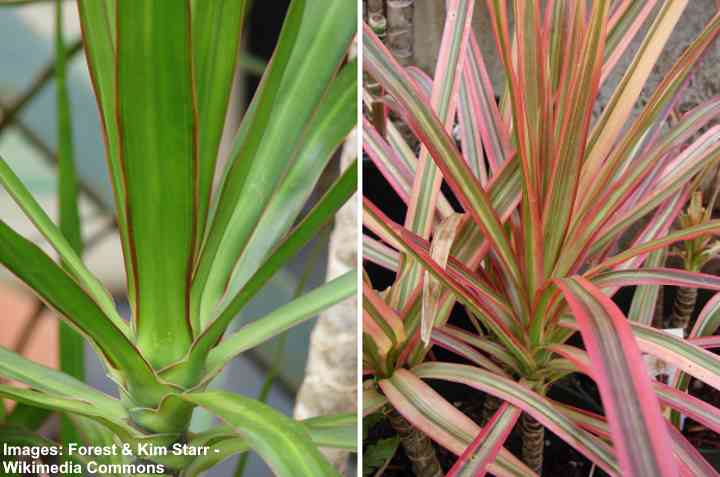
In the picture: dragon tree hybrids with different colored foliage
Pruning a Madagascar dragon plant helps to control its height and encourage bushy growth. In time, the stems can grow long and bare. If this happens, prune the stem where you want new growth to appear. After pruning, you’ll find that new stems grow below the cut.
You can also prune the dragon tree to remove dead leaves and improve its appearance.
How to Propagate Dragon Plant
Dracaena marginata plants are easy to propagate by rooting stem cuttings. With a clean sharp knife or pruning shears, cut off a leafy section of stem. You should cut so that there are at least two nodes on the cutting. Place the cutting in a jar of water for roots to grow.
Once the stem cuttings are rooted, you are ready to transfer them to a new pot. To grow a bushy Dracaena tree, you can grow two or three cuttings in one pot.
Repotting Madagascar Dragon Tree
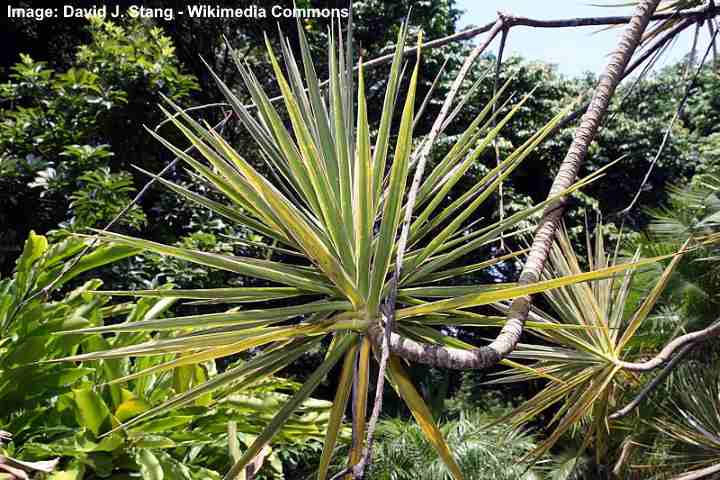
This image shows dracaena marginata growing outdoors
Dragon tree plants are on the list of easy to care for houseplants because they only need repotting every two or three years. Most types of Dracaena plants are slow-growing, even in ideal conditions. Also, the palm-like houseplants prefer to be somewhat rootbound, so annual repotting is not necessary.
When it comes time to repot your dragon tree, choose a new container that is 2” (5 cm) larger than the current one. A larger pot allows the roots more room to grow and encourages more growth. Here is how to repot your dragon tree:
- Carefully remove the plant and root ball by pulling on the stem.
- Shake the excess dirt off the roots and inspect the roots for any damage—look for mushy brown roots. Trim as necessary.
- Fill a new container half-full with the appropriate light potting mix.
- Put the tree in the pot and fill the remaining space with the rest of the soil.
- Gently press around the stem to give support and thoroughly water your plant.
- Place in a bright location that has partial shade.
If you just want to refresh the potting mix and keep the plant at the same height, you can follow the above instructions. However, instead of choosing a larger container, repot it in the same pot. You should also trim about one-third of the root length so that they have room in the pot.
Pests Affecting Dragon Tree Plants

When grown outdoors, dragon trees can grow up to 15 ft. (4.5 m) high
Several pests can infest your indoor Madagascar dragon tree. If left untreated, these microscopic bugs can affect your plant’s growth, and it will eventually die. The most common pests affecting dragon tree plants are mealybugs, scale, thrips, and spider mites.
Here are a few ways to spot signs of these houseplant pests:
- Scale—Look for unusual brown bumps on the plant’s stem.
- Mealybugs—These pests look like fluffy bits of cotton that are found under leaves or on the stems.
- Thrips—Check for tiny, slender insects crawling under leaves. They are usually black, but they can be white, green, or brown.
- Spider mites—The classic sign of spider mites is webbing under leaves or around stems. These pests often appear when the soil and room air is very dry.
Please read this article on ways to get rid of houseplant pests fast.
Madagascar Dragon Tree Diseases
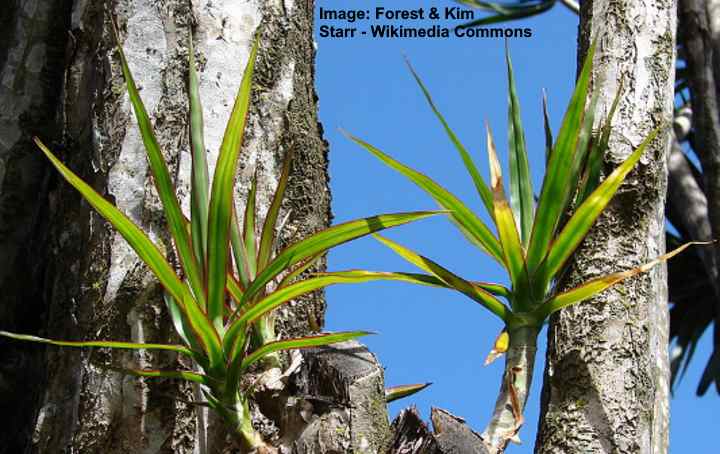
Dragon trees grown in nature
Dracaena marginata is a hardy type of houseplant that is fairly resistant to disease. The most common type of disease to afflict dragon plants is leaf spot disease. Overwatering causes leaf spot, and it shows up as brown spots on the glossy green leaves. Too much water can also cause leaf drop or wilting stems.
The best solution to get rid of plant diseases is to stop watering the plant until half of the potting soil dries out. However, if your plant doesn’t revive, it may be necessary to repot it in a fresh, sterile potting mix. Remember to inspect the roots to trim off any diseased ones.
Is the Madagascar Dragon Tree Plant Poisonous?
The Dracaena marginata is toxic to cats and dogs. The American Society for the Prevention of Cruelty to Animals (ASPCA) says that the toxicity in Dracaena plants is caused by saponins. Signs of pet poisoning include vomiting, anorexia, drooling, and dilated pupils in cats. (1)
Is a Dracaena marginata a Palm tree?
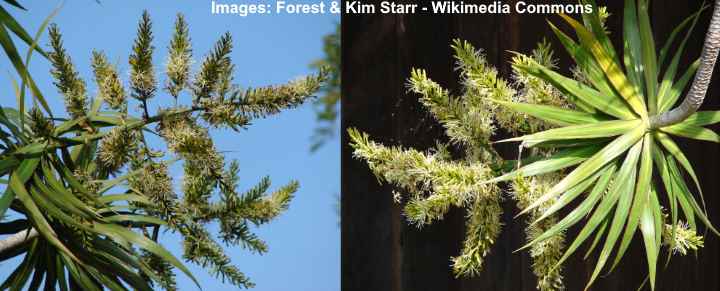
In the picture: dragon tree flowers
Although the spiky variegated foliage looks like a palm, the dragon tree is not a true palm. The tree looks similar to indoor palms such as areca palms or saw palmetto, and this is why this Dracaena plant has the alternative name “dragon palm.”
Do Dragon Trees Clean the Air?
Plants from the genus Dracaena—including dragon trees—can help remove toxins from the household air. According to a study by NASA scientists, Dracaena marginata can help reduce indoor air pollutants. Some of the chemicals mentioned were formaldehyde, benzene, and trichloroethylene. (2)
Please read this article to see other best clean air plants for your home.
Common Care Issues with Growing Dragon Tree Plant
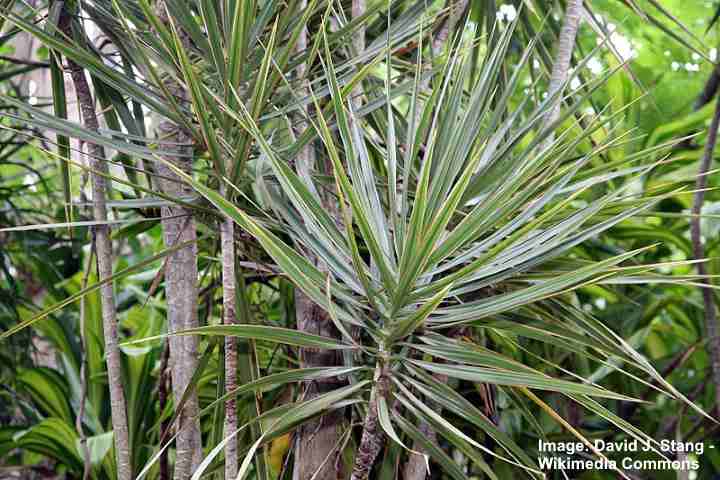
Madagascar dragon trees are hardy houseplants that are very easy to look after. However, despite your best efforts, you may still see some issues that affect their growth.
Why a Dragon Tree has Brown Leaf Tips?
Brown tips on the leaves of the Dracaena marginata are usually due to moisture or temperature issues. Make sure that you water the dragon plant when the soil is partly dry. Check to see that no drafts are affecting the plant. Give the plant a light misting to help revive it.
Why a Dragon Tree has Brown Spots on Leaves?
If you notice that leaves of your dragon plant develop brown spots, check your watering schedule as this can be a result of dry soil. The bottom half of the potting soil should always be slightly moist.
Why Dragon Tree Leaves Start Yellowing?
It’s natural that the old leaves of your dragon plant turn yellow and drop. If many leaves are turning yellow, check the soil for dampness. Overwatering your indoor plant can turn leaves yellow. The solution is to avoid watering until the top part of the soil has dried.
Why Dragon Tree Leaves are Falling Off?
Even though the dragon tree is an evergreen houseplant, some leaf drop is normal. However, overwatering or poor lighting conditions could cause leaves to wither and fall off.
Why Dragon Tree has Soft, Soggy Stems?
One of the classic signs of overwatering your dragon plant is soggy stems. Hold off watering the Dracaena marginata plant too often in the winter and only water when the soil dries. This may mean only watering your plant every few weeks or even less frequently.
Related articles:
